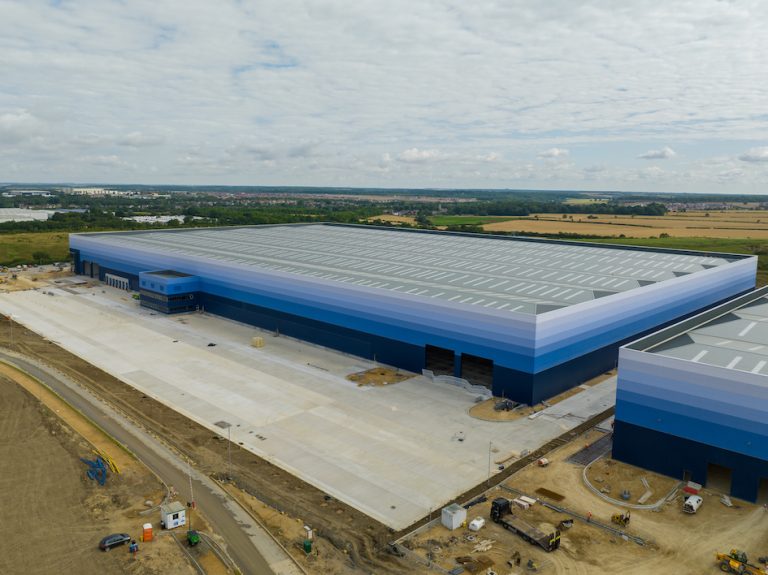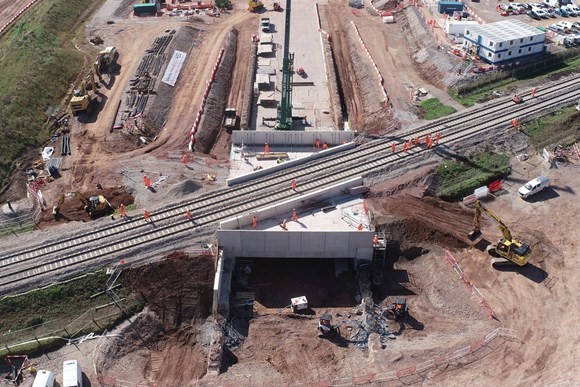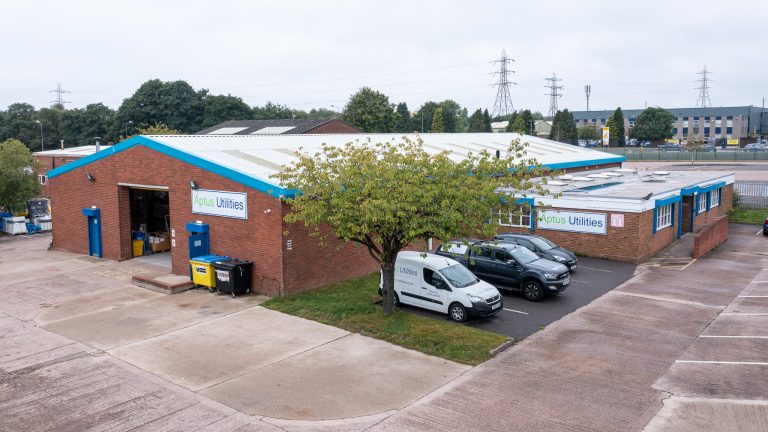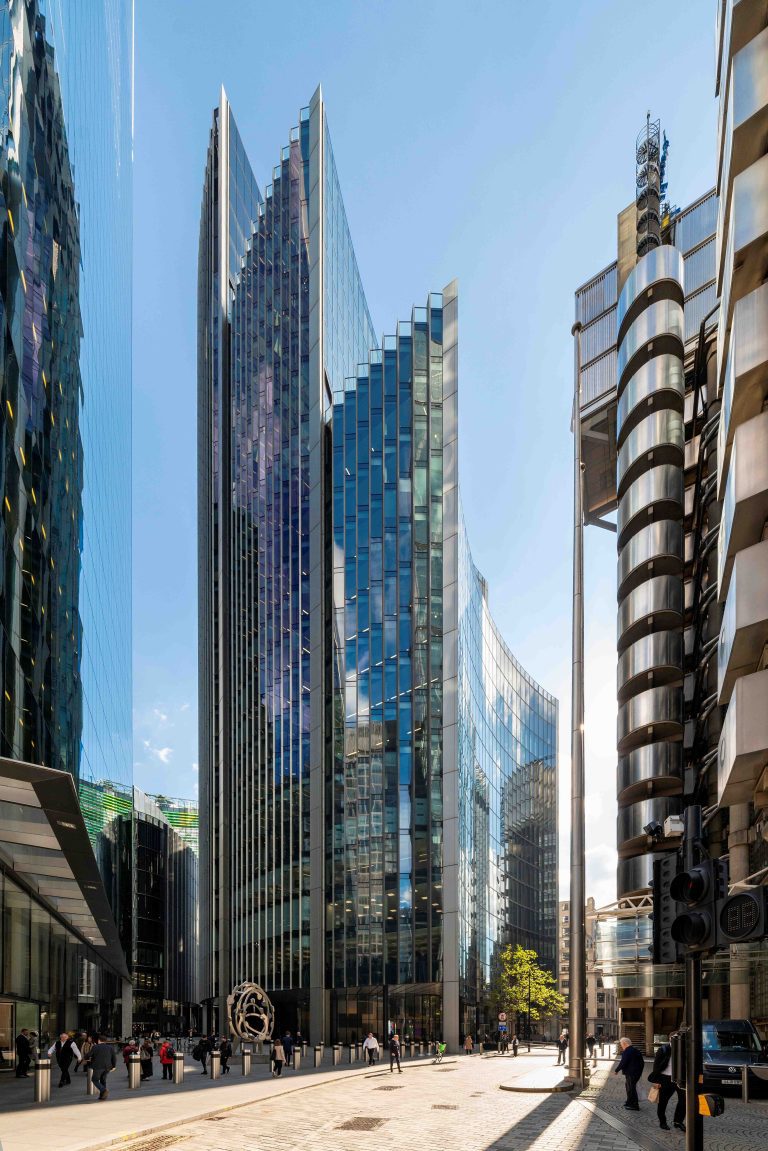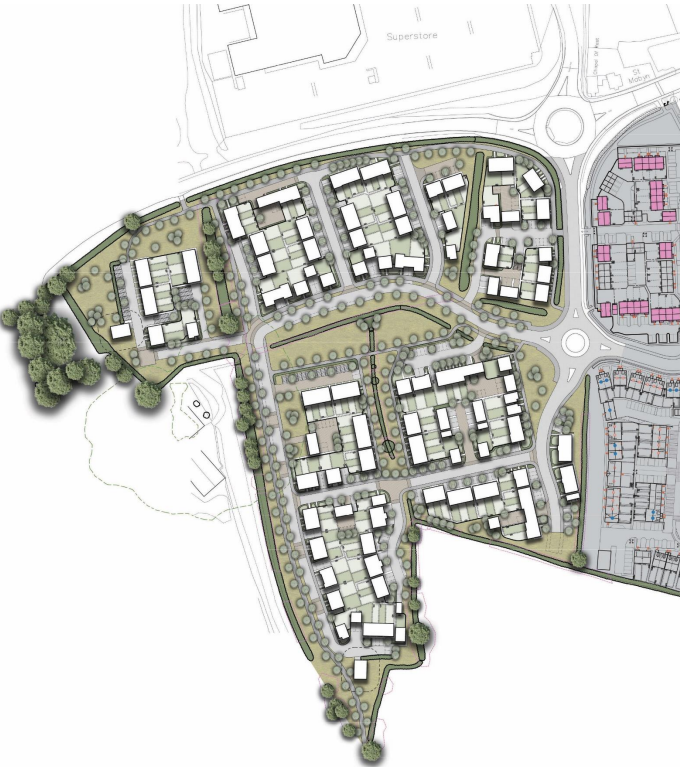HS2 has completed a ‘marathon’ construction operation at Streethay near Lichfield as part of an innovative project to pave the way for Britain’s new high-speed line. The operation – which utilised the latest low-carbon design – involved excavating 14,000 tonnes of earth, building a 140 metre retaining wall and moving a 2,600 tonne bridge deck 130 metres into place under the South Staffordshire freight railway. The work was carried out during a 10 week blockade. It was completed by HS2’s civils contractor in the West Midlands, Balfour Beatty VINCI, and designers Mott MacDonald as part of a Design Joint Venture with SYSTRA (MMSDJV), together with teams from 18 specialist supply chain companies. At the end of July, the 2,600 tonne bridge deck, which had been cast on land adjacent to the railway was moved 130 metres into position using self-propelled modular transporters. Since then, each side of the bridge was backfilled, the rail tracks were reinstated, with the railway line was successfully handed back to Network Rail on Wednesday 16 August and now reopened. The 25 metres long and 18 metres wide Streethay overbridge sits within HS2’s Streethay cutting and will enable HS2 trains to travel under the existing railway between Birmingham and Crewe. Through design development, Mott MacDonald engineers were able to reduce the total length of wall structures for the railway at Streethay from 1.6 kilometres to 420 metres, meaning 80% less concrete is needed – saving around 420,000 tonnes of carbon, supporting HS2’s ambition to cut carbon on the project. The Streethay bridge sits on top of the larger 420 metre long retaining wall structure which will have two additional bridges crossing it – the south bound A38 slip road bridge, and the Rykneld Bridge which carries the A38 north bound slip road and the A38 north and south bound carriageway. At its peak, over 150 people worked on the complex construction operation, with teams from 18 specialist companies, delivering design, surveys, piling works, bridge build, concrete pouring, crane operations, reinforcements, modular transportation, track and systems removal and reinstatement. The work was delivered in parallel to the construction of the nearby Fulfen Wood bridge, which involved moving a giant 6,200 tonne single span structure under the West Coast Main Line – the UK’s heaviest drive to install an intersection bridge. Caroline Warrington, Senior Project Manager at HS2 Ltd said: “This is a fantastic example of a project within a project at HS2, pulling together teams from 18 specialist supply chain companies from the West Midlands as well as other regions, to deliver a complex construction operation. These are some of the many companies that are helping to build Britain’s new zero carbon railway, supporting thousands of jobs right across the country. “Unlike the Fulfen Wood bridge structure, which was constructed entirely off site, the Streethay bridge walls under the railway embankment had to be constructed during the blockade. This required a 72 day blockade, making it more of a marathon than a sprint!” David Millar, Rail Interface Manager at Balfour Beatty VINCI said: “The successful delivery of this complex and challenging piece of engineering near Lichfield is another proud moment for Balfour Beatty VINCI on the HS2 project. “It’s only been possible thanks to the skill, dedication and support shown by the project team over the past few years, including our supply chain. Together, we’ve had to work around existing transport infrastructure, including the South Staffordshire freight railway and the A38, making this achievement even more rewarding.” Mark Jordan, Mainline Design Director at Mott MacDonald Systra Design Joint Venture: “We’re immensely proud of the collaborative effort to get the design for this critical structure and operation ready for HS2. It’s no small task to coordinate milestones like the Streethay bridge, with expertise from our geotechnical and structural engineering teams delivering design to meet the interfacing requirements of both HS2 and Network Rail, and innovation to enable off-site construction and transportation of the 2,600 tonne structure by Self Propelled Modular Transport.” Prior to the railway blockade, retaining walls were installed on either side of the railway, enabling the areas to be excavated. The bridge deck was constructed on land adjacent to the existing railway, 130 metres from its final position. Once the railway was closed to freight trains, the track and embankment were removed. Bachy Soletanche Balfour Beatty Ground Engineering joint venture then installed an additional 76 secant piles measuring 1.3 metres diameter and 30 metres deep, linking to the piles they installed prior to the blockade, to create two retaining walls which act as the walls for the bridge. A concrete capping beam was installed over the retaining walls, then the bridge was moved into place using self-propelled modular transporters with 344 wheels. Concrete was poured to attach the deck to the capping beam, the embankment was backfilled using 2,500 tonnes of structural backfill, on either side of the bridge, before the railway line was reinstated. The 18 companies which delivered the project were: The next works in this area include the construction of two HS2 over bridges which will run under the A38. Building, Design & Construction Magazine | The Choice of Industry Professionals




